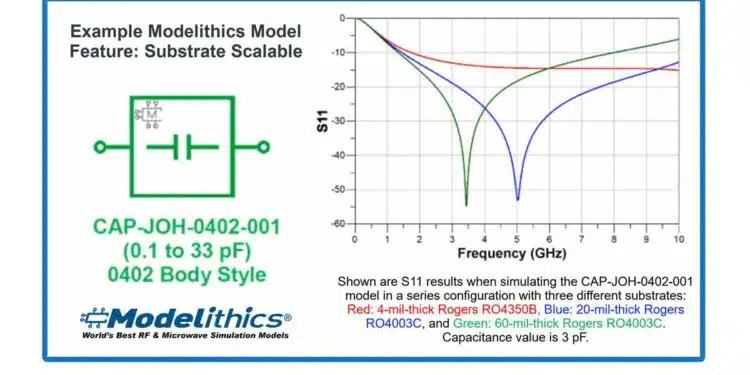Modelithics, Inc. is pleased to announce the release of v25.0 of its System Components Library for Keysight System Design (SystemVue).
This comprehensive library contains a wide range of models for various microwave system components, including amplifiers, splitters, couplers, filters, connectors, packages, mixers, and attenuators.
Amplifier models in the library offer both nonlinear X-parameter and linear S-parameter models from various manufacturers, many of which also include noise parameter prediction.
Filter models cover a diverse range of frequencies, including low-pass, high-pass, and bandpass filters validated up to 40 GHz. Additionally, attenuators are available with validation frequencies up to 50 GHz and spanning attenuation levels from 0 to 30 dB.
This release includes 24 new models, representing a total of 75 components. It is compatible with Keysight SystemVue 2025 and also includes eight new models for Smiths Interconnect splitter devices and seven new attenuators. Each of the new splitters is validated up to 67 GHz and features the Modelithics Substrate Selectable model feature. Furthermore, five new models have been added for splitter devices from International Manufacturing Services (IMS), including IPT0402WA-C-U, IPT0603WA-C, and others.
IPT0805WA-C, validated up to 67 GHz, is included in this release. New models are also available for Analog Devices amplifier, two Susumu attenuators, and a connector device from Hirose. All of these products feature the substrate selectable feature.
Through the Modelithics Vendor Partner (MVP) program, Modelithics models for IMS and Smiths Interconnect components are available for FREE for 90 days. For more information or to request free use of these models by Sponsoring MVPs and other Modelithics MVPs, visit https://www.modelithics.com/mvp/vsl.
Review the v25.0 release notes for more information about this new release and details on the new models available. To request a free trial, visit the Modelithics website at https://www.modelithics.com/model/scl.
































